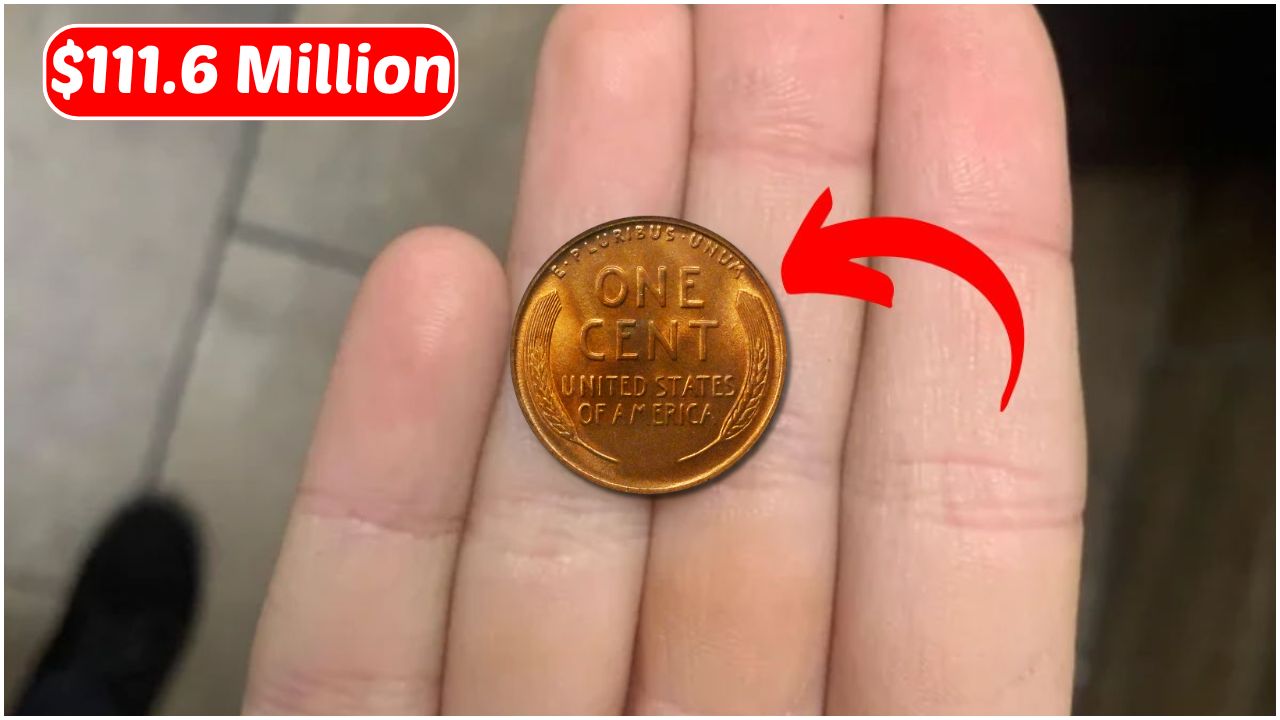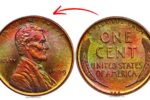The Lincoln Wheat Penny Valued at $111.6 Million: The world of coin collecting is full of surprises, and one of the most remarkable discoveries is the Lincoln Wheat Penny valued at an incredible $111.6 million. This rare penny, originally minted decades ago, is still believed to be in circulation, making it a potential treasure hidden in everyday pocket change. Let’s explore why this penny is so valuable and how you can identify one.
History of the Lincoln Wheat Penny
The Lincoln Wheat Penny was first introduced in 1909 to commemorate the 100th birthday of President Abraham Lincoln. Designed by Victor David Brenner, this penny featured Lincoln’s profile on the obverse side and two wheat stalks on the reverse, symbolizing prosperity. The coin was produced until 1958, after which it was replaced by the Lincoln Memorial design.
What Makes This Lincoln Wheat Penny Worth $111.6 Million?
While most Lincoln Wheat Pennies are only worth a few cents or a couple of dollars, certain rare varieties command astronomical prices. The $111.6 million Lincoln Wheat Penny stands out due to its unique characteristics:
- Rare Minting Errors – Some pennies were struck with double die errors or off-metal compositions, making them highly sought after by collectors.
- 1943 Copper Penny – In 1943, pennies were supposed to be made from steel due to wartime copper shortages. However, a few were mistakenly struck in copper, making them extremely valuable.
- High-Quality Condition – Pennies that have been preserved in mint-state condition, with no signs of wear, fetch higher prices.
- Unique Provenance – Some coins gain value due to their ownership history or connection to historical events.
How to Identify a Rare Lincoln Wheat Penny
If you come across a Lincoln Wheat Penny, here are some ways to check if it’s a valuable one:
- Check the Date – Pennies from 1909, 1914, 1922, and especially the rare 1943 copper variety are among the most valuable.
- Look for Mint Marks – Coins from the Denver (D) and San Francisco (S) mints tend to have higher values than those from Philadelphia (no mint mark).
- Examine for Errors – Double-die strikes, off-center prints, and misaligned lettering can increase the coin’s worth.
- Use a Magnet Test – The 1943 steel penny is magnetic, but if you find a 1943 copper penny that does not stick to a magnet, you might have a rare and valuable coin.
- Assess the Condition – Coins in pristine condition with minimal scratches or discoloration are more valuable.
Other Valuable Lincoln Wheat Pennies
Even if you don’t find the rare $111.6 million penny, other Lincoln Wheat Pennies can still be worth thousands of dollars. Some notable examples include:
- 1909-S VDB Penny – A key-date coin known for its low mintage and high value.
- 1914-D Penny – A rare variety that commands a high price in collector markets.
- 1922 No-D Penny – A version missing the Denver mint mark, making it a rare find.
- 1955 Double Die Penny – A famous error coin with noticeable doubling on the lettering and date.
Where to Sell a Rare Lincoln Wheat Penny
If you believe you have a valuable Lincoln Wheat Penny, consider these selling options:
- Online Coin Auctions – Websites like eBay, Heritage Auctions, and Stack’s Bowers host rare coin auctions.
- Coin Dealers and Shops – Professional coin dealers can help assess and purchase valuable pennies.
- Coin Shows and Expos – These events connect collectors and sellers directly.
- Grading Services – Organizations like PCGS and NGC can certify your coin’s authenticity and condition, increasing its market value.
Conclusion
The Lincoln Wheat Penny valued at $111.6 million remains a hidden treasure in circulation. With careful examination and a bit of luck, anyone could come across one in their spare change. Whether you’re a coin collector or just curious about the value of your pennies, always check your coins you might be holding a fortune in your hands!
Disclaimer: Coin values fluctuate based on condition, rarity, and market demand. The $111.6 million valuation is speculative and not a guaranteed price. Always verify rare coin details with an official numismatic expert or grading service before making any financial decisions.




